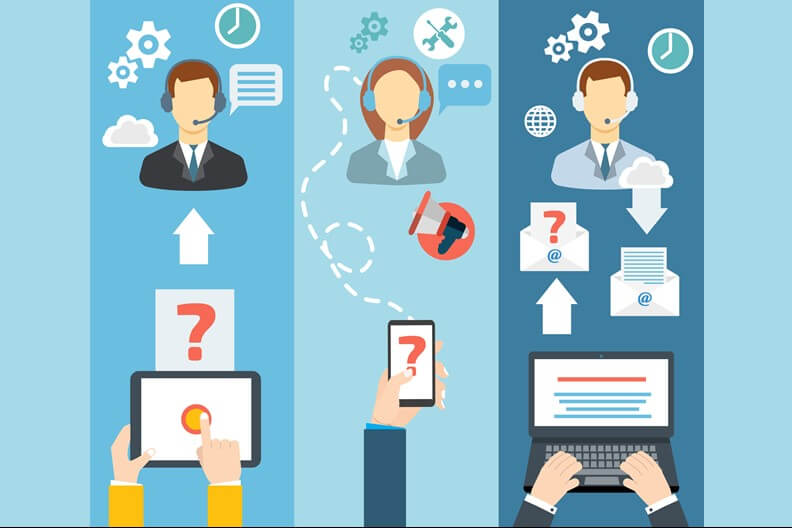A growing number of organizations are recognizing the value of building a workplace culture that supports employees working at their own pace, responding to inquiries when their schedule allows it and working hours that feel most productive for them.
Asynchronous technology – that is, technology that makes it possible for employees to work independently and reply to messages when they can – is one of the main drivers of the aptly named asynchronous workplace culture. Examples of this technology include instant messaging apps like Slack, project management tools like Asana and visual workspaces used for brainstorming like Miro.
While asynchronous technology offers many benefits, preserving a certain level of human connection between co-workers is essential. People crave person-to-person connection. Employees that belong to a workplace that lacks it tend to feel isolated and disengaged.
Fortunately, there are ways to incorporate asynchronous technology and forge strong interpersonal working relationships. Keep reading to learn about the best ways to accomplish it.
BENEFITS OF ASYNCHRONOUS TECHNOLOGY
There are good reasons why many organizations are relying more on asynchronous technology these days. Employees and employers can benefit from it in several compelling ways.
Higher Employee Satisfaction Levels
Micromanaging workers rarely works out well for employers. On the other hand, when employees feel like their manager trusts them to do their work well and on time, it gives workers a sense of empowerment. Since asynchronous technology makes working their own hours and at their own pace possible, it contributes to higher employee satisfaction levels.
Healthier Work-Life Balance
The flexibility of a workplace culture that takes an asynchronous approach helps prevent burnout and work-related stress by giving employees control over their schedules. Workers feel free to attend appointments, spend time with family and friends and practice self-care when they are not held to the same schedule as their teammates.
Improved Productivity
Some employees are morning people, while others thrive later in the day. This is more than just a preference; time of day can affect how well people are able to focus on their work and come up with their best ideas. By letting employees determine what time of day they do their best work and when they are most productive, the better the odds are you will receive it.
Better Collaboration
Part of the beauty of technology is that it provides more tools for employees to use. These tools are particularly helpful when it comes to collaboration between teammates. Visual workspaces are a perfect example, as they facilitate sharing ideas at any time – not just during a meeting. This can be an ideal setting for brainstorming, vetting ideas before a meeting, and tracking data on team collaboration in general.
More Inclusive Work Environment
It is far too easy for people in any structured situation, from elementary school days to the workplace, to feel left out. The stricter the setup, the less inclusive it is. However, if you respect differences in time zones, working styles and working speeds, you send a clear message that everyone is considered a valued contributor.
OVERCOMING THE CHALLENGES
As with any technology or approach, the asynchronous one has its drawbacks. This does not mean you should dismiss it entirely. Below are some of the related challenges and solutions to overcome them.
Virtual Communication Is Less Engaging
Researchers at Yale found that virtual meetings are less engaging than in-person meetings. (1) Why? Facial expressions make more of an impact in person than they do through a screen. Although virtual meetings are synchronous rather than asynchronous – in other words, they require participants to attend the meeting at the same time – this finding speaks volumes about asynchronous communication.
If an employee is instant messaging with a teammate, for example, the only image they have is their co-worker’s profile picture. The tone and meaning of written communication are infamous for getting lost in translation, sometimes to detrimental effect. Think about text messaging. Chances are, you have probably misunderstood the tone of a text message at some point in your life.
Seeing facial expressions in person goes a long way in not only avoiding miscommunication, but also in keeping participants engaged. So, how does this fit into a partly or fully remote workplace that uses asynchronous technology?
Holding face-to-face meetings is a great use case. It is crucial for companies to hold in-person meetings during the year. Whether this means twice a year, quarterly or monthly, getting teammates together in the same space helps strengthen working relationships and spark engagement.
And you can still take advantage of asynchronous technology, by sharing the following prior to the meeting:
- The agenda and meeting materials.
- Video clips that relate to the topic of the meeting.
- The link to a visual workspace or discussion board where attendees can contribute ideas.
Not All Employees Work Well Independently
Yes, every employee will have to work independently for part of the workday. But in a traditional workplace, they will also meet with teammates about projects and work as a group on them. This means getting together on the same day, at the same time, instead of using asynchronous technology to work on them on different days and/or at different times. Some employees need this synchronous interaction to perform their job well.
This is another instance where hosting in-person get togethers proves valuable. Consider bypassing the standard video conference in favor of gathering teammates for in-person working sessions. Again, the frequency is entirely up to leadership, but when it comes to employees who favor working as a group, any time spent with their colleagues is better than none.
Working Asynchronously Makes Teambuilding Difficult
It stands to reason that if teammates are not working on projects at the same time, they are not communicating on a regular basis. The less interaction and communication coworkers have, the weaker their bonds will be as a team. With all the benefits that asynchronous technology offers, it fails in this area.
But this does not mean you have to give up your asynchronous tools and platforms. Instead, balance it out by holding in-person teambuilding events. These gatherings provide an excellent opportunity for co-workers to participate in activities designed to strengthen the bonds between them.
Sending high performing teams on company-funded group trips to reward their hard work is another great teambuilding strategy. The emphasis here is on group excursions, not solo ones. You want recipients to spend plenty of time together during the trip. Dinners in a space reserved especially for the group, cultural activities and tours of local sights are all ideal for bonding.
Technology Can Cause Communication Breakdowns
As stated above, tone and meaning can get lost in asynchronous methods of communication like instant messaging, text messaging and emailing. These misinterpretations can be harmful if the perceived tone or meaning is negative. Communication breakdowns can cause anything from mild resentment to full blown feuds. Costly errors are also a potential outcome of asynchronous communication channels. A project could easily crash and burn if the wrong ideas or changes are communicated.
This is where establishing and sharing guidelines around platforms and tools are critical. Train employees on how to use forms of asynchronous communication in a smart, thoughtful way. Furthermore, stress the importance of double checking the information that workers get via these channels.
MODERN TECHNOLOGY MEETS IN-PERSON QUALITY TIME
As you can see, there definitely is a very real place for asynchronous technology in a healthy workplace culture. It is a matter of striking the right balance between giving employees the freedom, flexibility, and autonomy they crave and ensuring they get enough face-to-face time in person.
Are you seeking a polished meeting planner who can leverage the advantages of in-person connections or incorporate team building in your corporate meeting or event? Contact Gavel International for more information.
_______________________
SOURCE(S):
- Why Hustle Culture Can Harm Sales Success – and How to Repair the Damage - June 30, 2025
- Enhance Sales Through Team-Friendly Storytelling - May 5, 2025
- Unlocking Excellence: The 7 Traits of Top Performers and Their Impact - April 14, 2025






